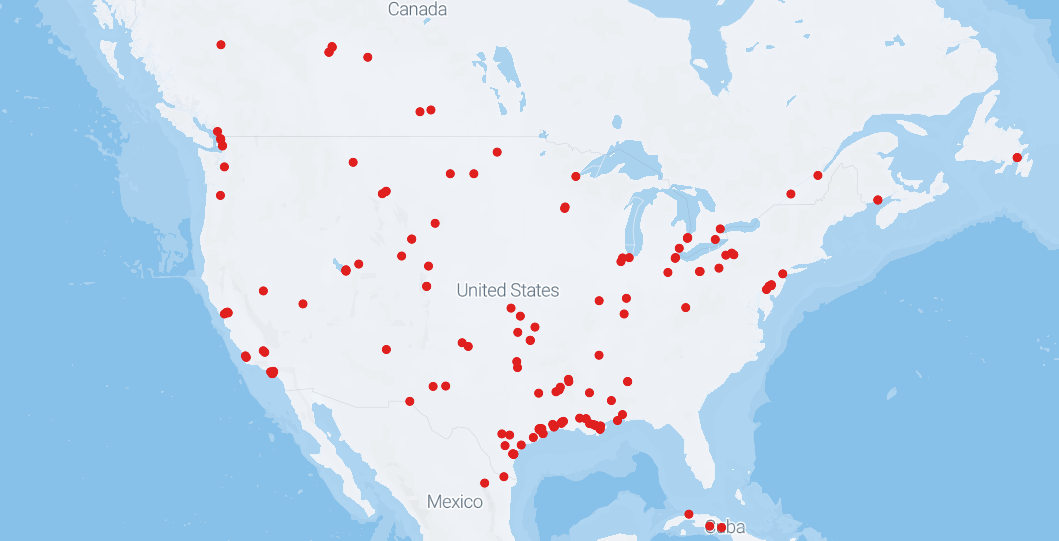
U.S. Oil Refinery Utilization At Near-Peak Levels
As of May 2022, refining capacity stands at 17.9 million barrels per day. With utilization at near-record highs, the refinery margins are also at a record high.
In a prior note, we look at the energy industry from a production and capital expenditure perspective. U.S. President Joe Biden has called upon the industry to increase both oil production and refining capacity.
In this note, we focus on the latter as refineries play a key role in the lifecycle of a barrel of oil by converting it into refined products including gasoline, diesel, and jet fuel.
Exhibit 1 highlights the U.S. refining system at an aggregate level. As of May 2022, refining capacity stands at 17.9 million barrels per day (bpd). In other words, the U.S. can push through a maximum of 17.9 million bpd through its system (it can fluctuate week-to-week).
We note that refinery capacity has declined by approximately 1 million barrels per day since the 2020 pandemic.
Looking at gross inputs (i.e., how many barrels are currently being pushed through the refining system), the latest reading stands at approximately 16.6 million bpd.
Exhibit 1 – U.S. Refining Capacity
Refining utilization at near-peak levels
Comparing gross inputs relative to maximum operating capacity, we arrive at a ‘utilization rate’ for the refining system as shown in exhibit 2. The latest utilization rate stands at 94.2% – in other words, the typical refining unit is running at 94% of maximum capacity.
Exhibit 2: U.S. Refining Capacity Utilization
We also look at refining utilization on a seasonality basis in exhibit 3 which shows that the current utilization rate is seasonally above the last three years which is important ahead of the summer driving season. For reference refinery utilization dropped to a pandemic low of 56% in March 2021.
Exhibit 3: U.S. Refining Capacity Utilization
With utilization at near-record highs, the refinery margins are also at a record high.
To measure margins, we look at crack spreads, which measure the difference between the purchase price of crude oil and the selling price of finished products such as gasoline and diesel. The spread excludes individual refinery operating costs but can be used as a measure of general profitability amongst refineries.
As shown in Exhibit 4, the crude oil crack spread is near a record high of $57.8 despite higher oil input prices. A contributing factor to the high spread is the average selling price of finished products including gasoline and diesel which are both at a record high.
Exhibit 4: Crack Spread
Refiners scoring high from a StarMine Perspective
Using Refinitiv Workspace, we head to the Aggregates app and look at large and mid-cap companies in North America. Exhibit 5 highlights the top-ranked sub-industries using various StarMine models.
The Oil & Gas Refining & Marketing sub-industry has 13 constituents which are ranked among the highest in North America. The sub-industry has an aggregate ranking of 89 out of 100 for both the StarMine Combined Alpha Model and Analyst Revision Model.
The mean EPS estimate for 2022 has increased by 98.44% over the last 90 days (+25.24% for Revenue) which means analysts have been busy raising estimates for companies in this industry. Refiners also score well on our Relative Valuation Model (78th percentile) which ranks companies on a ‘cheap’ or ‘expensive’ basis using various valuation metrics.
Because refiners exhibit strong fundamentals and earnings revision, the industry is likely to pass the screens of institutional investors with a Smart Holdings rank of 78. Finally, the industry has a high Earnings Quality rank of 90 (top decile).
Exhibit 5: Aggregate StarMine Scores for North America
In conclusion, as the refining system is running at near-peak levels, it appears that the energy sector will be limited in its ability to increase refining capacity.
Furthermore, the decline in refining capacity was exacerbated during the 2020 pandemic as a collapse in oil prices forced unprofitable refineries to shut down. The energy industry is also moving to a net-zero carbon strategy which means less investment will be put into refineries which use carbons as its primary source. For example, the transition to energy vehicles will reduce demand for gasoline.
It appears that any price pressure at the pump will require either a) new facilities to be brought online and/or b) a reduction in consumer demand for gasoline to give the industry a chance to rebuild supply levels.
Alpha Insight by Lipper, July 5, 2022
